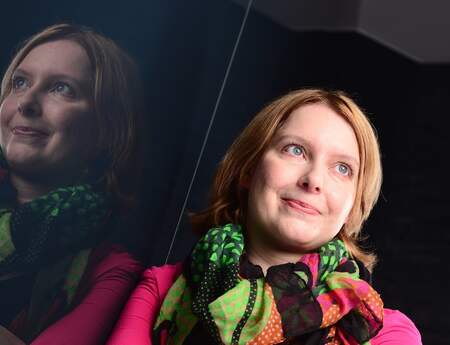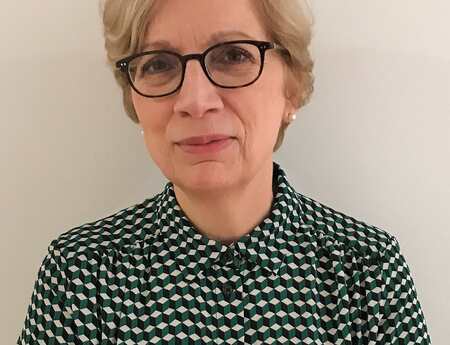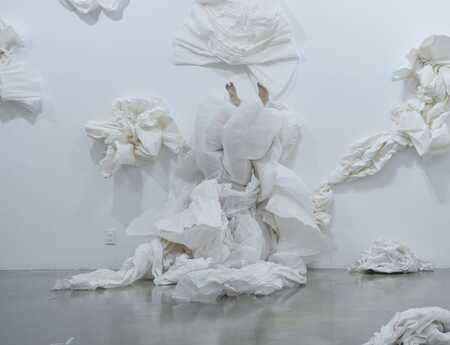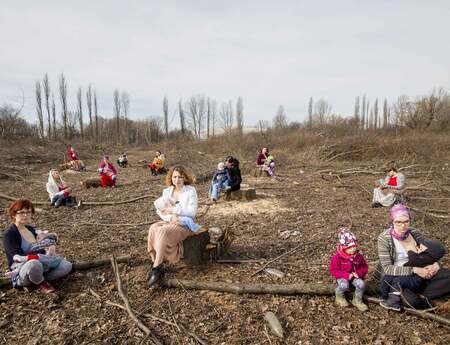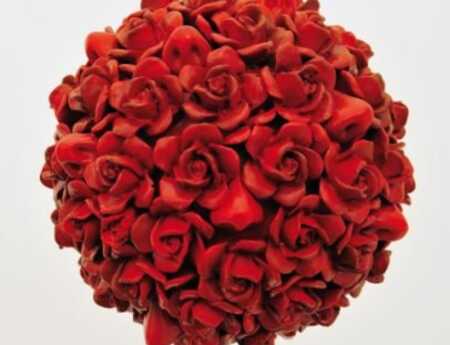The Online Club: Louis le Roy and Sara Vrugt – Re-nature
Two generations, two approaches but one common frame of mind: nature is the driving force, if not the co-creator in the community art of Louis le Roy and Sara Vrugt. The Sculpture Network Online Club session on 18 November 2024 was hosted and moderated by Anne Berk, with Piet Vollaard giving an insightful lecture about Louis le Roy´s eco-cathedral. And later, trained fashion designer and artist Sara Vrugt gave insight into her community art project 100,000 Trees and a Threaded Forest.
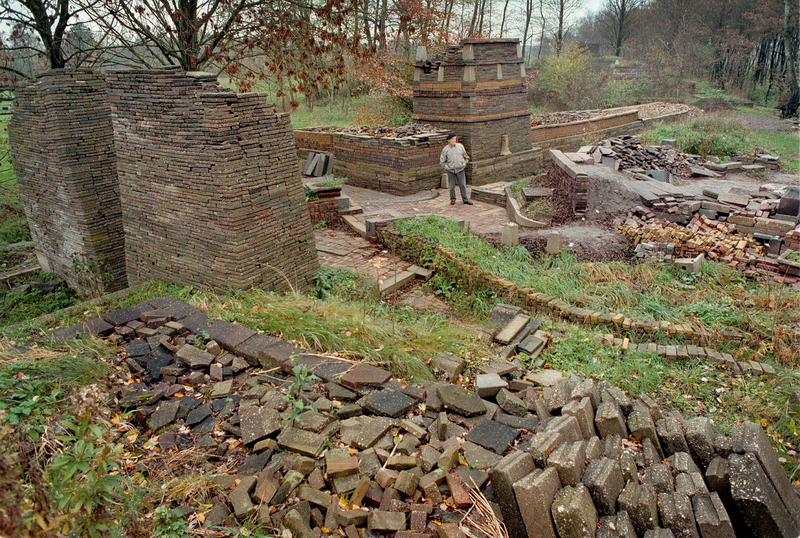
Host and Sculpture Network Co-Chairperson Anne Berk welcomed the audience, and architect and architecture critic Piet Vollaard gave an in-depth introduction to Louis le Roy (1924-2012, NL), an artist born almost exactly one hundred years ago and often called the “wild gardener”. But he is much more than that, even though his land art started indeed with a particularly natural and “wild” piece of area in his own garden in Oranjewoud in 1965. Most of his working life, le Roy also had a “bread-and-butter” job next to his vocation as artist – he was a teacher, because, for long, he had thought that money should not be earned through art. Land art – or in this case “wild gardening” – was not his sole (artistic) form of expression. During the first decades of his creative life, le Roy was also a painter, a photographer, a sculptor, and an author bringing in his theoretical knowledge and reflections on architecture and philosophy.
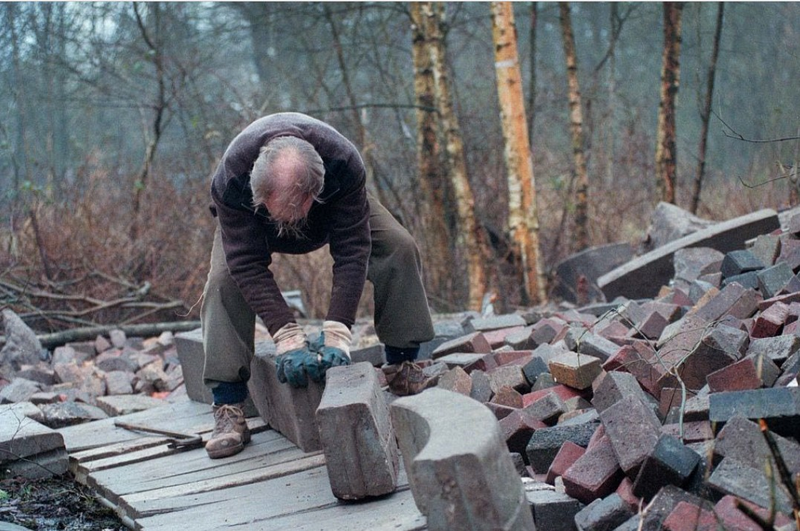
His greatest artistic legacy, though, remains the eco-cathedral (nl. Ecokathedraal, dt. Ökokathedrale), the topic of Vollaard´s lecture. The project started in 1983 in Untzenlaan / Mildam and is a gesamtkunstwerk (a total work of art), created by man, animals, and plants – an entire ensemble where visitors can perceive these interactions and feel connected to them. To experience this himself, le Roy built his studio amid the three hectares large area that he bought. Each week, a lorry would deliver material to the project site (waste fragments from excavated streets, bricks, tiles, stone slabs, cobblestones etc.), and then the artist would arrange and stack this material to elements all over the area, in an unplanned, spontaneous manner and without using mortar or other composites. And then nature takes over and does the finishing touches over years, decades, and, if it were up to the artist, even centuries.
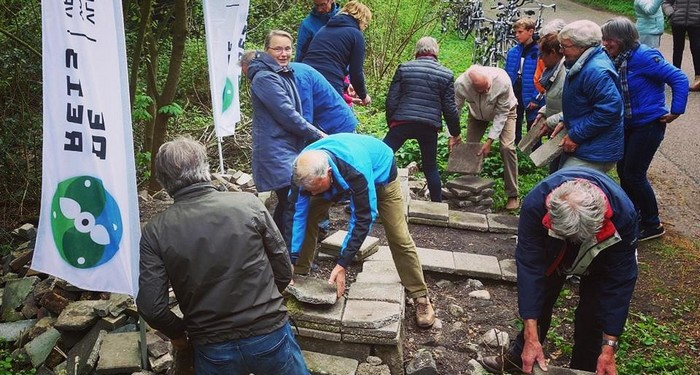
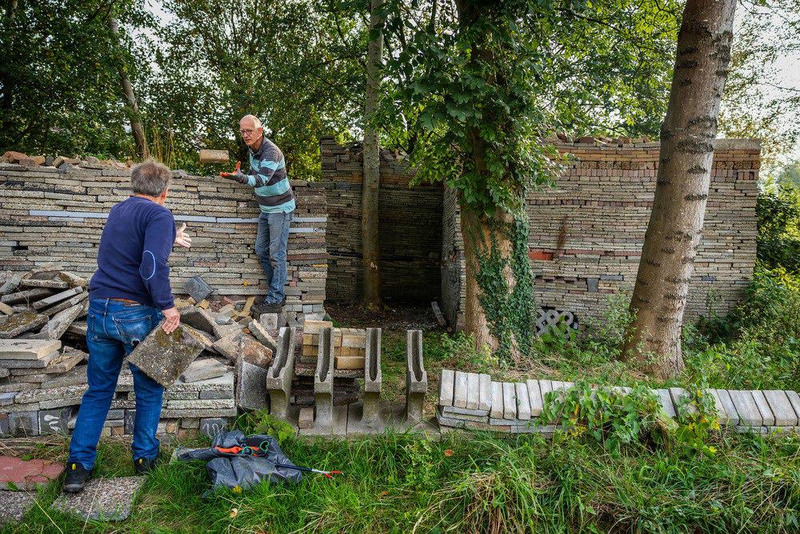
Man brings “order” to “chaos”, and nature slowly takes back the stacked murals and structures, forming them in its own way. At the beginning, Louis le Roy worked alone, but gradually he started involving more and more people as helpers and co-artists, so that, similar to earlier “wild gardening”-projects, this one can also be considered community art. And indeed, with Louis le Roy´s death, the construction of the eco-cathedral didn’t stop. The work continues, led by other artists in le Roy´s spirit who follow the doyen´s principles and at the same time leave their own individual creative traces. Piet Vollaard´s talk was so proficient as if the audience had heard the artist himself reflect on his own work.
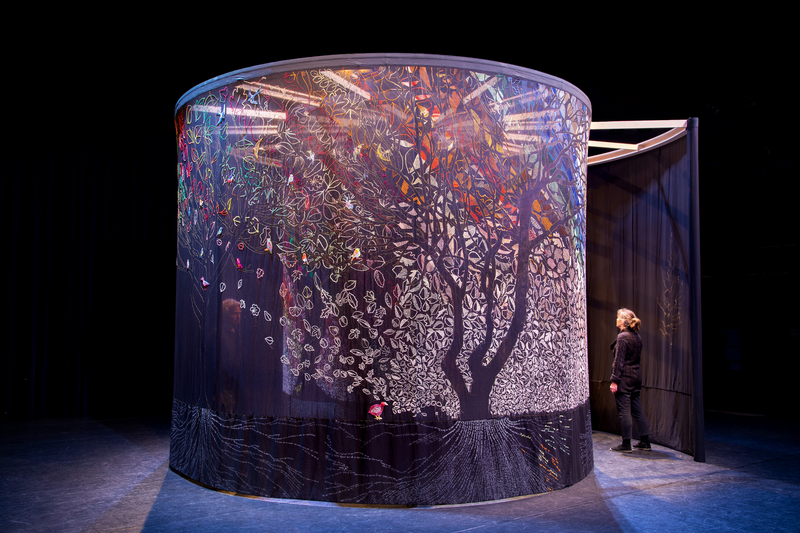
Following this inspiring lecture, artist and trained fashion designer Sara Vrugt (1983, NL) presented her ambitious community art project. 100.000 bomen en een bos van draad (en. 100,000 trees and a threaded forest). The work of art consists of a walk-in spiral shape fabric construction (size 4 x 6 m) featuring embroidered trees, leaves and animals and co-created by 1,278 individuals of diverse backgrounds, with or without experience in the craft of embroidery. Parallel to the work itself, 100,000 real trees were planted through crowdfunding activities and with the involvement of the TreeSisters movement. With this art and nature conservation project, the young artist wanted to make a real difference, to clearly show the connection between human beings and nature, and to accomplish, as part of a community, an art undertaking of such a vast dimension. Vrugt was also interested in the experience of her diverse co-artists coming from Germany, Japan and Australia, and also from the Netherlands. Their stories form, as concise embroidered text, the roots of the trees in the finished fabric environment. The long-term idea is to put up the fabric spiral on an open site along with freshly planted trees, and to allow nature to appropriate and decompose, little by little, this man-made work of art in its entirety. By its character, Vrugt´s testimonial was largely a report on her experience and a look behind the scenes of her project, rather than a theoretical lecture. The audience was all the more taken by the presentation and felt the palpable enthusiasm of the artist for this important project.


Despite the differences, the two artists and their projects have something in common: Both projects have the character of a gesamtkunstwerk, requiring a generous amount of time, the collaboration of many people, and a lengthy renaturation process. Both are walk-in projects whose essence and character only really begin to unfold in the dialogue with the observer.
The audience, coming from different countries, was clearly inspired by the two contributions at this Sculpture Network Online Club event. The participants asked interesting questions and were as captivated by the answers as by the preceding presentations.
Written by Iris Haist in German.

